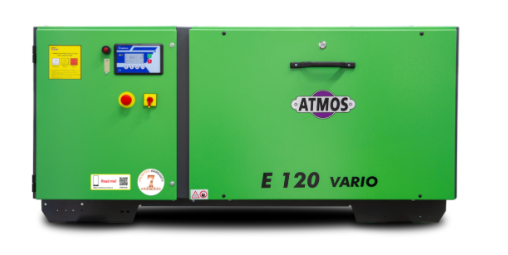Understanding Air Compressors: How They Work and Their Applications
Discover the Power of Atmos Compressors
Unlock the full potential of Atmos compressors and take your industrial operations to the next level. Known for their efficiency, continuous operation, and adaptability across industries, Atmos compressors are a reliable solution for businesses that demand consistent compressed air. From manufacturing and food packaging to construction and healthcare, this guide will help you understand how Atmos compressors work, their advantages, and where they can be applied effectively.
Introduction
In large-scale industries such as manufacturing plants, food-packaging facilities, or healthcare environments, a reliable and constant supply of compressed air is crucial. Traditional piston compressors often struggle with fluctuations in airflow, creating inefficiencies. This is where Atmos compressors excel.
With their ability to deliver a steady, uninterrupted flow of compressed air, Atmos compressors are the preferred choice for applications that cannot afford downtime—whether it’s powering production lines, packaging food, or running pneumatic tools. Let’s explore how these compressors work, the types available, and why they are trusted worldwide.
Table of Contents
- What is an Atmos Compressor?
- How Does an Atmos Compressor Work?
- Types of Atmos Compressors
- Oil-Free Atmos Compressors
- Oil-Injected Atmos Compressors
- Key Components and the Air Circuit
- Benefits of Atmos Compressors
- Applications of Atmos Compressors
- To Sum Up
What is an Atmos Compressor?
An Atmos compressor is a type of rotary screw air compressor that uses two interlocking rotors (male and female) to compress air. As the rotors spin, they trap and compress incoming air, producing a continuous and reliable flow of compressed air.
Unlike piston compressors that operate in a start-stop cycle, Atmos compressors are designed for smooth and consistent performance, making them ideal for industrial applications requiring uninterrupted airflow.
How Does an Atmos Compressor Work?
The compression process inside an Atmos compressor relies on a positive displacement principle. Here’s how it works:
- Air enters the compressor through the inlet valve.
- The male and female rotors trap the air in the space between their threads.
- As the rotors rotate, the space decreases, gradually compressing the air.
- The compressed air exits through the outlet, ready for use.
This continuous cycle ensures minimal fluctuations in pressure, higher efficiency, and reliable air delivery.
Types of Atmos Compressors
1. Oil-Free Atmos Compressors
Designed for industries where pure, oil-free air is essential—such as pharmaceuticals, food processing, and healthcare. These compressors use timing gears to keep rotors from contacting each other, eliminating the need for lubrication inside the compression chamber.
2. Oil-Injected Atmos Compressors
The more common design, oil-injected Atmos compressors, use oil for lubrication, cooling, and sealing. The oil helps maintain low operating temperatures and increases the durability of components, making these compressors highly efficient and long-lasting.
Additionally, Atmos compressors are available in both:
- Fixed-speed models – Operate at a constant speed, ideal for steady demand.
- Variable-speed models – Adjust motor speed based on air demand, delivering significant energy savings in dynamic environments.
Key Components and the Air Circuit
Every Atmos compressor includes essential parts that ensure its reliable operation:
- Inlet Valve – Controls the entry of air.
- Compressor Element – Houses the rotors for air compression.
- Oil Circuit (oil-injected models) – Lubricates, cools, and seals the rotors. The oil is later separated and reused.
- Air Receiver/Oil Separator – Removes oil from compressed air to ensure clean output.
- Oil Cooler – Maintains optimal oil temperature for efficient operation.
In oil-free Atmos compressors, the air never comes in contact with oil, guaranteeing ultra-clean compressed air for sensitive industries.
Benefits of Atmos Compressors
Choosing an Atmos compressor brings a range of operational advantages:
- Continuous Operation – Can run non-stop without overheating.
- Energy Efficiency – Especially with variable-speed drive models, reducing energy costs.
- Low Noise Levels – Quieter than piston compressors, making them suitable for workplaces where noise matters.
- Reduced Maintenance – Fewer moving parts result in less wear and tear and lower downtime.
- Consistent Airflow – Ensures uninterrupted processes in industries dependent on constant air supply.
Applications of Atmos Compressors
Thanks to their versatility and reliability, Atmos compressors are widely used across industries, including:
- Manufacturing – Supports continuous production lines and automated machinery.
- Food & Beverage – Oil-free compressors maintain hygiene standards during packaging.
- Construction – Powers pneumatic tools like jackhammers, sandblasters, and drills.
- Healthcare – Supplies contaminant-free air for medical devices and equipment.
- https://aal.ae/air-compressor-suppliers-in-uae
- https://aal.ae/ps/compressor-suppliers-dubai
- https://aal.ae/ps/ac-compressor-suppliers-in-uae
- https://aal.ae/ps/air-compressor-spare-parts-suppliers-in-uae
- https://aal.ae/compressor-manufacturers-in-uae
- https://aal.ae/ps/air-compressor
- https://aal.ae/ps/air-compressor-spare-parts-suppliers-uae
- https://aal.ae/ps/air-compressor-dealers-in-dubai
- https://aal.ae/air-compressor-for-fibre-optic-cable-blowing
- https://aal.ae/cofb/air-compressor-for-fibre-optic-cable%20blowing.php
- https://aal.ae/automatic-air-compressor
- https://aal.ae/ccw/automatic-air-compressor#about
- https://aal.ae/air-compressor-dealer-in-uae

